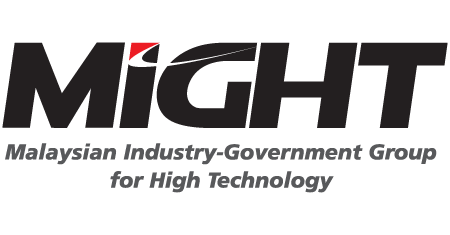The impact of the COVID-19 pandemic on world GDP growth is of such scale and magnitude that all 190 countries under the International Monetary Fund posted negative growth in 2020. In grappling with the urgent and real need to effectively end the health and social devastation, it is imperative that we not lose sight of and potentially derail longer-term growth trajectories and aspirations.
Among the many possible long-term consequences of the pandemic, two in particular merit close examination. The first is its impact on Malaysia’s aspiration to achieve high-income country status. Malaysia’s current Gross National Income (GNI) per capita at US$11,200 is only US$1,335 short of the high-income threshold, which Malaysia hopes to reach by 2028. Secondly, the economic and financial shocks associated with COVID-19 may put a dent in Malaysia’s commitment to the 2030 agenda for Sustainable Development.
These are not mutually exclusive. Malaysia had previously demonstrated a strong growth trajectory and had taken only 10 years to raise its GNI per capita from US$7,600 in 2009 to US$11,230 in 2019. This would suggest that the transition to a high-income nation at the US$12,535 per capita GNI threshold is not only desirable, but an eventuality.
What got us here, won’t get us there
The formula seems fairly straightforward, i.e. improve competitiveness, create high quality jobs, strengthen institutions and, perhaps most importantly, increase the capacity to finance the transition, through both internal and external means. This calls for the existence of robust legislation that provides a framework for financial instruments to scale-up private investments.
However, the socio-economic devastation resulting from the pandemic and the push for ‘green recovery’ has resulted in investment assessment processes comprising new sets of financial risk parameters alongside traditional financial metrics. Seven-one per cent of institutional investors now plan to integrate Environment, Social and Governance (ESG) into their investment process by 2030.
Far from merely being ‘nice to have’ sustainability is fast becoming a business imperative and the stakes are high. Depending on the methodology and definitions used, JP Morgan estimated that in 2019 the figure stood at US$3 trillion while by Global Sustainable Investment Alliance (GSIA) estimation the number is closer to US$31 trillion. GSIA expects assets with an ESG mandate to reach US$160 trillion by 2036.
The need for ‘mainstreaming’
It is therefore crucial that national development policies incorporate the ‘mainstreaming’ of sustainability objectives. This process ensures that sectoral strategies and policies align with and contribute to the overall sustainable agenda. This in turn deep dives further into ‘policy coherence’ which details out the specifics to ensure policy and programmes work cohesively toward agreed higher-level goals and targets.
This approach is embedded in contemporary policy formulation including the New Industrial Master Plan, Defence and Security Industry Policy and Strategic Development of Trade and Consumer Affairs Strategic Plan all of which combine elements of high technology, innovation and sustainability.
One example of the incorporation of sustainability elements is in the aviation sector, e.g. through resource and process changes such as the use of aviation fuel, carbon sequestration and vehicle electrification, among others. These contribute to the industry’s emissions-reduction strategy; the use of alternative fuels for example could reduce CO2 emissions by approximately 80% as compared to fossil fuels.
The contemporary rail industry also incorporates energy efficiency, carbon emissions and modal shift among others and directly addresses SDG elements through targets relevant to the rail and public transport sector, for example SDG 7 Clean Energy and SDG 8 Sustainable Tourism.
These reflect a growing shift in consumer preference which first gained traction during pre-COVID years but has since greatly increased momentum. The pandemic has fuelled a mass digital migration including online purchases, hybrid work and meetings and medical consultations. While some may constitute a transient trend, still others are new ‘ways of working’ and are likely here to stay. These new realities have both social as well as environmental implications.
Taking it to the ground
The state of Melaka’s foray into green technology is an example of widespread public awareness and demand for sustainable goods and services fuelling interest and investment in broad-based green initiatives. Its foray into green building, for example, sees extensive use of IoT which provides solutions for all sectors including infrastructure, energy, health and retail. Additionally, the application of smart grid technology promises to solve the energy trilemma of affordability and access, energy security and environmental sustainability and ultimately aims at reducing greenhouse gases (GHG).
Melaka’s experience and success show great promise for further replication in other states. Perak, for example, is set to embark on the Perak Green Print, while the Penang State Government is closely looking at technologies and methodologies used in treating and managing solid waste. Smaller operators also stand to gain from this new wave of environmental consciousness, for example through revenue generated from the manufacture of biodegradable packaging from paddy husks in Gurun, Kedah.
Sustainable measures in the maritime sector include the onshore power supply (OPS) technology currently being evaluated by the Johor Port Authority which provides clean energy to ships berthed at the seaports. This enables shipping companies, port operators and regulators to reduce the sulphur emissions as stipulated by the International Maritime Organisation (IMO) and is aligned with the Green Port Policy.
Normalising and consistently incorporating sustainability measures in Malaysia’s growth plan will augur well for efforts to jump-start its high-income aspiration in the aftermath of the COVID-19 pandemic. The collective challenge is to continue to keep one’s eye on the ball.
— BERNAMA

